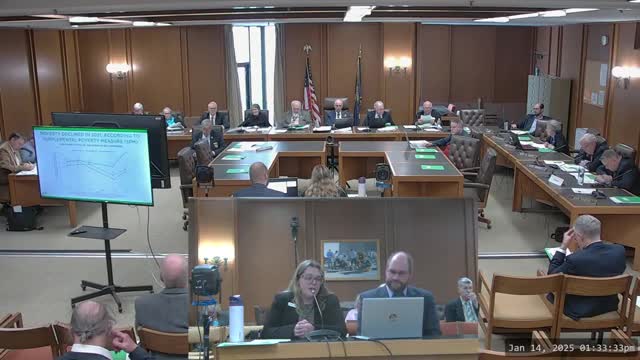Fiscal Policy Institute: business tax receipts and one‑time interest gains drove recent surpluses; revenues softened in 2024
January 14, 2025 | Ways and Means, House of Representatives, Committees , Legislative, New Hampshire
This article was created by AI summarizing key points discussed. AI makes mistakes, so for full details and context, please refer to the video of the full meeting. Please report any errors so we can fix them. Report an error »

Phil Sletten of the New Hampshire Fiscal Policy Institute presented the committee with a review of general and education trust fund revenues and recent surpluses.
Sletten summarized a long‑run pattern: business‑tax receipts (business profits and business enterprise taxes) grew substantially after 2015 and especially during 2021–2022. That concentrated growth — partly a national phenomenon following strong corporate profits and in part an effect of federal tax changes that altered corporate behavior — drove a large fiscal 2023 surplus. NHFPI said the fiscal 2023 surplus stemmed primarily from combined business taxes, meals & rentals, real‑estate transfer revenues and lottery receipts.
For fiscal 2024, Sletten said the available (unaudited) numbers show a much smaller surplus (about $126 million through December) and that two categories — state interest on cash holdings and the state interest & dividends tax — accounted for a large share of the surplus (roughly half combined). He called both of those sources temporary and sensitive to interest‑rate cycles. Using the December snapshot, combined business tax receipts were roughly $80–$85 million below prior‑year levels and below plan as of December.
Why it matters: Sletten emphasized volatility in corporate tax receipts — a small number of filers account for a large share of business‑tax revenue (about 120 filers produced 40% of the BPT in recent years) — and noted the state’s recent revenue gains were uneven and may not persist.
What presenters flagged for Ways and Means: verify large corporate filers’ behavior, re‑examine one‑time and temporary revenue assumptions (interest receipts, one‑time transfer taxes), and consider the implications of tax‑base and rate changes (for example, changes to tax credits and sourcing rules) that can produce unanticipated refunds or revenue swings. Sletten recommended caution in relying on temporary revenues when planning ongoing spending increases.
Ending: the Fiscal Policy Institute offered slide materials and told the committee it would provide follow‑up analysis on December revenues and the state revenue plan.
Sletten summarized a long‑run pattern: business‑tax receipts (business profits and business enterprise taxes) grew substantially after 2015 and especially during 2021–2022. That concentrated growth — partly a national phenomenon following strong corporate profits and in part an effect of federal tax changes that altered corporate behavior — drove a large fiscal 2023 surplus. NHFPI said the fiscal 2023 surplus stemmed primarily from combined business taxes, meals & rentals, real‑estate transfer revenues and lottery receipts.
For fiscal 2024, Sletten said the available (unaudited) numbers show a much smaller surplus (about $126 million through December) and that two categories — state interest on cash holdings and the state interest & dividends tax — accounted for a large share of the surplus (roughly half combined). He called both of those sources temporary and sensitive to interest‑rate cycles. Using the December snapshot, combined business tax receipts were roughly $80–$85 million below prior‑year levels and below plan as of December.
Why it matters: Sletten emphasized volatility in corporate tax receipts — a small number of filers account for a large share of business‑tax revenue (about 120 filers produced 40% of the BPT in recent years) — and noted the state’s recent revenue gains were uneven and may not persist.
What presenters flagged for Ways and Means: verify large corporate filers’ behavior, re‑examine one‑time and temporary revenue assumptions (interest receipts, one‑time transfer taxes), and consider the implications of tax‑base and rate changes (for example, changes to tax credits and sourcing rules) that can produce unanticipated refunds or revenue swings. Sletten recommended caution in relying on temporary revenues when planning ongoing spending increases.
Ending: the Fiscal Policy Institute offered slide materials and told the committee it would provide follow‑up analysis on December revenues and the state revenue plan.
View full meeting
This article is based on a recent meeting—watch the full video and explore the complete transcript for deeper insights into the discussion.
View full meeting
